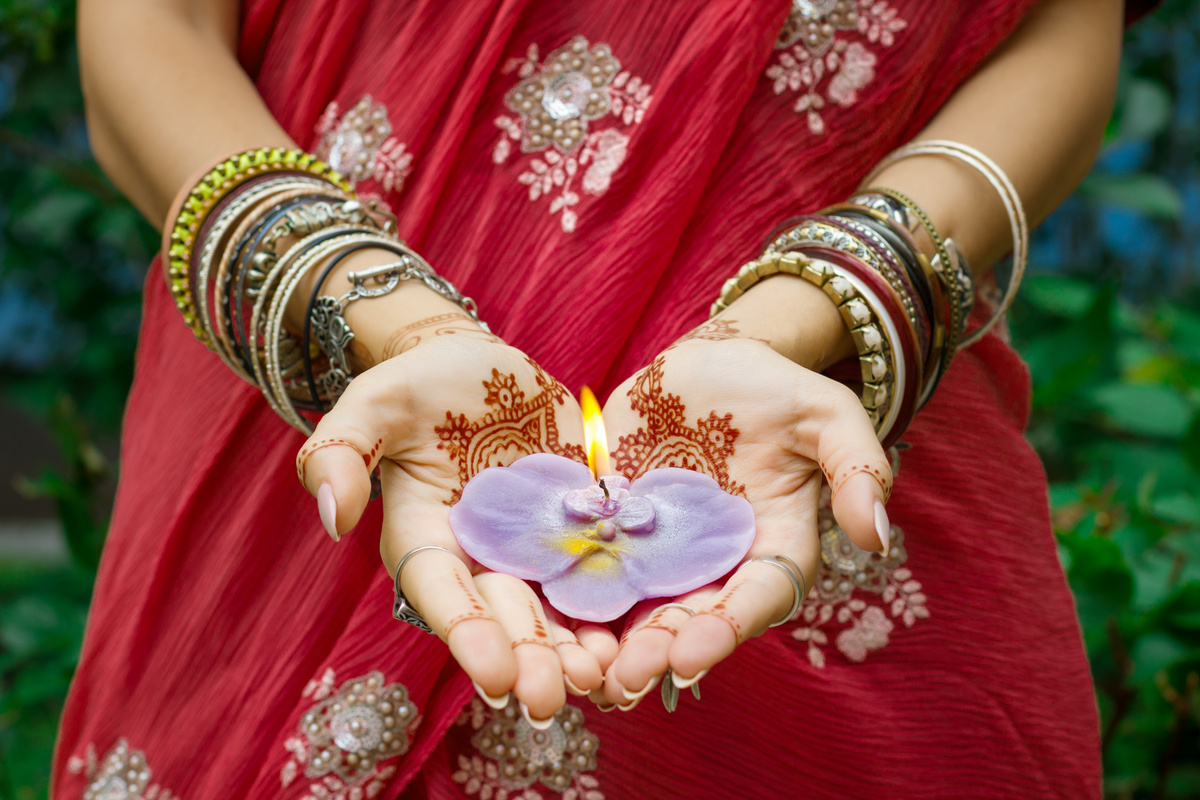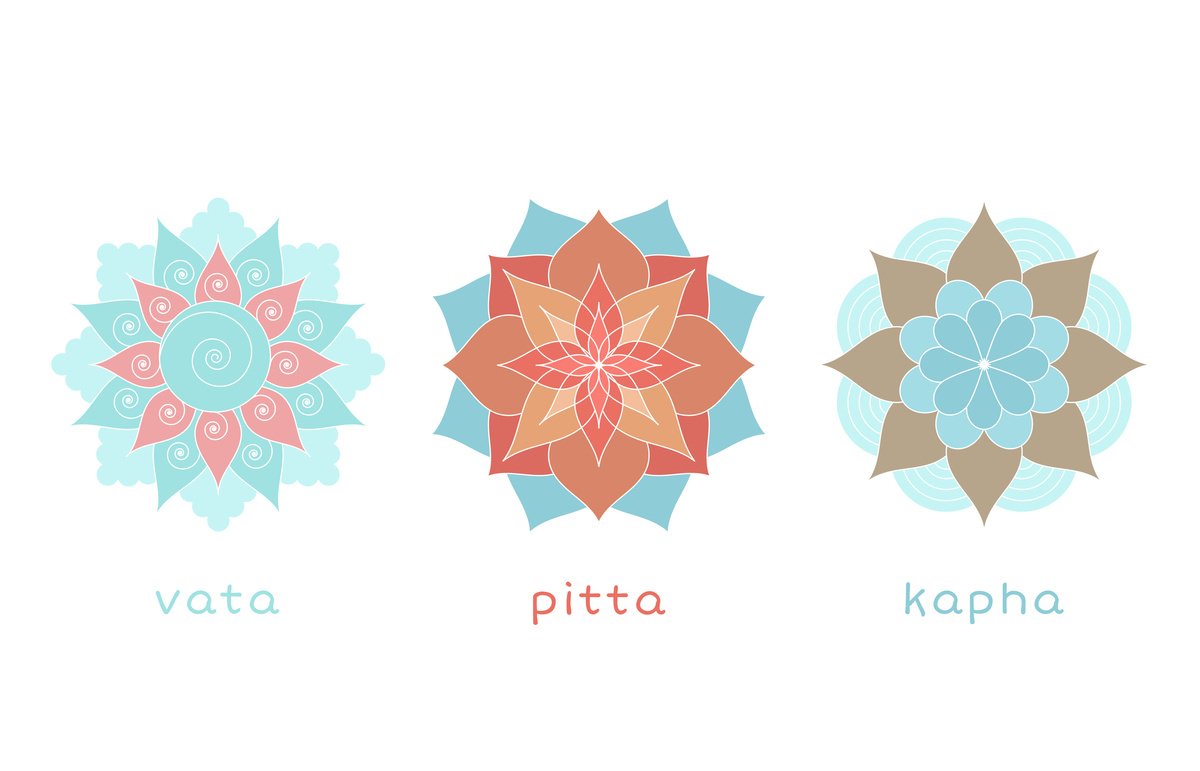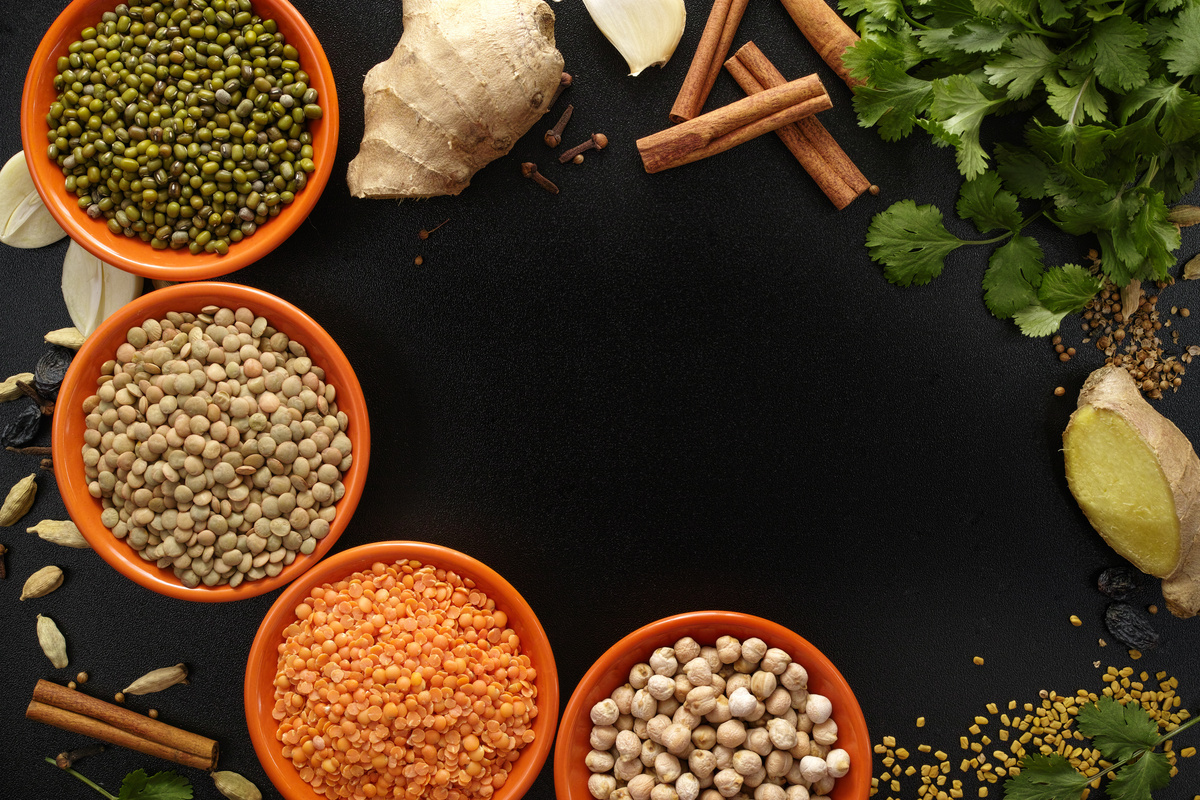Table of contents
What is Ayurveda?

Ayurveda, also known as Ayurvedic Medicine, is an ancient Indian therapy that seeks to balance the physical body, the mind (manas), the soul (atman) and the vital energy (prana) of the individual. This is done through the use of various work fronts such as food, yoga, medicinal plants, massage, purification, among others.
For Ayurvedic Medicine, there are three principles or energies, called Doshas, which constitute all people, they are: Vata, Pitta and Kapha, which are combinations of the elements Water (Jala), Earth (Prithvi), Fire (Agni), Air (Vayu) and Ether (Akasha). In general, one of them manifests itself in a more intense way, so that in order to achieve balance, the person must take this doshainto consideration.
According to Ayurveda, the unbalance of these energies, which may originate from emotional issues, physical traumas or poor diet, is what causes the accumulation of toxins in the body that lead to disease. Thus, the system seeks to rebalance the doshas through its techniques.
Learn more about the history, foundations and benefits of Ayurveda, as well as what are the properties of each dosha, the main techniques used and how is the diet and who can make use of this ancient Indian medicine.
Understanding Ayurveda

Ayurveda is still an unknown medicine for many Brazilians, despite being so old. To start learning about it, read below what are its pillars, the etymology of its name, what is the origin and history, what are the foundations and the main benefits of Indian medicine.
Etymology
The term Ayurveda originates from the ancient Indian language called Sanskrit, being the junction of the words "Ayus", which means life, and "Veda" means knowledge or wisdom. The word Ayurveda, therefore, can be translated as "Science of Life", the knowledge or wisdom that seeks a healthy life in harmony with the laws of nature.
History
Ayurvedic Medicine has approximately 5,000 years of history and its origin lies between the territories of India and Pakistan. During the first years of the era known as the Christian Era, the three treatises that condense Ayurvedic Medicine appeared, called Brihat Trayi, the Great Trio.
They are "Caraka Samhita", "Susruta Samhita" and "Astanga Hridayam", the latter produced many centuries after the others.
The treatise "Charaka Samhita" is compendium of Charaka, internal medicine or medical practice,
"Susruta Samhita", which is a compendium of Susruta, Ayurvedic surgery, and the "Ashtanga Hridaya", which is the heart of Vagbhata's 8 branches of Ayurveda.
In the West, and more specifically in Brazil, however, Ayurveda became known only in the mid-1980s, when Vasant Lad, an Indian doctor and teacher, founded the Ayurvedic Institute in the United States.
Since then, the technique has spread with even more speed and force through writers and researchers such as Deepak Chopra, among others.
Fundamentals
Ayurveda has as its main foundation the search for balance between the physical body, mind and soul, so that the individual in balance with himself can enter in harmony with the people around him, as well as with nature.
He promotes this rebalancing through methods that blend the proper nutrition for each person, various therapies, medicinal plants, massage, yoga and purifications.
Benefits
Ayurveda brings many physical, emotional and mental benefits to those who seek it. Among them are: the nutrition of the body, the improvement of blood, lymphatic and energetic circulation, which leads to the correction of energetic imbalances. It also helps in increasing the resistance of the immune system, improvement in muscle relaxation and skin hydration.
The techniques aimed at the emotional and mental increase the energy and well-being, and promote more tranquility for the person who makes use of this medicine. Therefore, Ayurvedic Medicine helps in the prevention and cure of physical diseases such as diabetes, high blood pressure, chronic pain, cancer, allergies, and emotional diseases such as depression and anxiety.
Because the Ayurvedic diet pays attention to natural foods and to controlling the quantity of meals, it also leads to weight control and consequent weight loss, although this is not its focus.
Understanding the Doshas

For those who don't have much contact with the wisdom of oriental therapies, the idea of Dosha may even sound something like an astrological sign, but it's not quite like that. Ayurveda is based on the elements of the planet Earth, and not on the stars, to observe and understand what is inside human beings.
After all, men are part of nature and are more like it than they would like to admit. Read below what each Dosha represents and how it influences the people who possess it.
What are Doshas?
In Ayurveda, the Doshas are the biological principles, forces or humors that represent the combination of the natural elements of Air, Fire, Earth, Water and Ether. They influence each person's body type, metabolism, personality and emotional patterns.
One might think that each person has only one of these types of Dosha within them, however everyone carries a mixture of all three, where only one Dosha stands out. It is stated that there is a Dosha that runs deep within the person's self, and the one that is on the surface, and it is the latter that needs to be rebalanced sometimes during life.
These Doshas need to be in harmony for the individual's physical, mental and spiritual life to be full, but imbalance is very common, especially in modern life.
Dosha Vata
The Dosha Vata is ruled by the elements "space" and "air", and people ruled by it are usually bodily thin, tall and sensitive to cold. In personality, they tend to be agile, enthusiastic, indecisive and communicative. The qualities that this Dosha carries inside the person are those of dry, light, subtle, cold, mobile, rough and clear.
Vata is in the large intestine and rules the body movements. People can be very agitated and anxious, talk a lot and incoherently. For having predominance of air, when it is in unbalance, this Dosha causes anxiety, insomnia, swelling and even constipation. Also, back problems and arthrosis are common.
The tastes to be sought by people ruled by this Dosha are sweet, sour and salty. Bitter, spicy and astringent should be avoided. Light and dry foods should be especially avoided, as they aggravate the imbalance of this principle, which is already so full of air.
Dosha Pitta
Pitta is a Dosha ruled by the elements "fire" and "water" and, in general, people with this pronounced influence have average size and accelerated metabolism, which comes accompanied by constant thirst.
They are also active and critical and carry the qualities of hot, sharp, liquid, sour, spicy, fluid and oily. This Dosha is in the small intestine and governs digestion.
It is believed that most people have this dominant Dosha, which can be seen mainly in authoritarian personalities. When in unbalance, these individuals have intestinal problems, which can be worsened with spicy foods. Since their strongest element is fire, they also get irritated, their appetite greatly increases, acne appears, and reddened skin.
When eating, it is recommended to look for sweet, bitter and astringent flavors (which cause a feeling of tightness in the mouth, such as cashew and green banana). Acidic, salty and spicy flavors should be avoided.
Dosha Kapha
The elements "earth" and "water" rule the Dosha Kapha, which composes people with strong and wide bodies, with a great tendency to gain weight. They are stable people, slow, patient and with a tendency to laziness. The qualities they carry are the soft, heavy, slow, light stable, thick, soft, viscous, oily and sweet.
Kapha is located in the stomach and is related to emotions. People with this unbalanced Dosha have difficulty digesting issues, which causes blockages in their interpersonal relationships, and it is common, as a result, to develop depression, or get to obesity by seeking comfort in food. There may also be issues with excessive production of mucus, possessive behavior andrespiratory problems.
When it comes to food, the tastes that people with pronounced Kapha should avoid are sweet, salty and acidic, while the tastes they should look for because they are beneficial are spicy, bitter and astringent.
Practices

Ayurvedic Medicine is composed by several action fronts that, when worked in an integrated way, lead to the rebalancing of body, mind and spirit.
Some of the main practices of Ayurveda are: food, medicinal plants, massage, purifications and Yoga. Read below how each technique is used in search of the individual's balance.
Food
One of the main pillars of Ayurveda is food. It is used to balance a person based on their predominant Dosha. For example, one should focus on sweeter or bitter, astringent or milder foods, depending on their type of principle, as it indicates what the excesses and faults of your body are.
It is also recommended that the diet be based on fresh, easily digestible food, preferably of the current season of the year. Something very much observed in this aspect is that the act of feeding should be done in a careful way, without haste, with full attention to the food and chewing.
Phytotherapy
The use of medicinal plants is one of the great allies of Ayurvedic Medicine, as well as Chinese medicine and other medicines known in the West as alternatives.
In Ayurveda, herbs and roots are used that have healing and preventive properties for various types of conditions, and are given to patients in forms of teas, syrups, capsules or roots and seeds.
Massage
Massage is a technique used to manipulate and promote the circulation of vital fluids, or energies of the body of the person, so that it takes them to or removes them from certain points. From body movements and maneuvers, with the help of essential oils, herbal powders or volcanic stones that are chosen according to the need of each individual, toxins are removed, while thebody tissues are nourished.
The type of massage also varies according to the person's Dosha. For example, Vata calls for slow, attentive movements, while Pitta needs deep quick gestures, while Kapha uses pressure and kneading. The first two need essential oils, while the latter requires herbal powders.
Purification
Purification seeks to rebalance the Doshas and maintain good health by eliminating all that has not been digested and that can cause illness. It is performed mainly by cleaning the intestines and respiratory tracts, with food and fluids.
Yoga
Yoga is highly recommended when seeking Ayurvedic Medicine due to the fact that it is composed by the union of physical exercises and contemplation through meditation. With the practice of this activity, the individual can achieve balance and mental and emotional peace, which are among the main objectives of this medicine.
Ayurvedic Diet

The diet used by Ayurvedic Medicine is aimed at vitality, physical health, as well as mental and emotional health, which can also be affected by food.
It works on the prevention and cure of various conditions to improve these aspects, so it is necessary to know in advance what the situation of the Doshas of the individual, to then decide which direction to take and which diet to resort to.
The beneficial or harmful foods are not a fixed and predefined constant, but vary according to the Doshas of each person. However, there are some indications that can be followed by everyone.
Among them are: avoid changing meals for snacks, eat slowly, value the quality of food more than the quantity, drink water between meals and try to have regular eating times. Read more about what Ayurveda suggests for a healthier diet.
What to eat
A common point is that the diet should be based on fresh and natural foods - that is, free of pesticides and preservatives, and preferably in season. Examples are fruits, vegetables, milk and its derivatives, fish, chicken, olive oil, nuts, walnuts.
In addition, natural spices and condiments that facilitate digestion, being the most suitable: clove, cinnamon, nutmeg, turmeric, ginger, rosemary, saffron, anise, basil and parsley.
They are antioxidants and aid in digestion, benefiting the body to deflate, prevent disease, strengthen the immune system and also improve blood circulation.
What not to eat
Among the foods considered harmful to everyone are stimulant drinks such as coffee and energy drinks, refined sugar and salt, white flour, red meat, as well as sweets, soft drinks, fried foods, animal fat, alcoholic beverages and products with chemical additives. In addition, overeating and smoking also make up the list of what should be avoided by everyone.
Who can do Ayurveda?

Ayurveda has no restrictions on who can or cannot make use of its medicine, whether by distinction of age, gender or level of health condition.
However, it should be borne in mind that it works with recipes of medicinal plants and oils that have indications, contraindications, therapeutic doses and possible adverse effects, so that they should be analyzed case by case individually by a professional in the area before the therapy is initiated.
It can also be used as a complementary treatment to traditional western medicine (allopathy) for an existing condition, which improves the quality of life of the person with the condition. In addition, it can also be used as prevention, as it is not necessary to wait for the disease to arrive to take good care of it.

